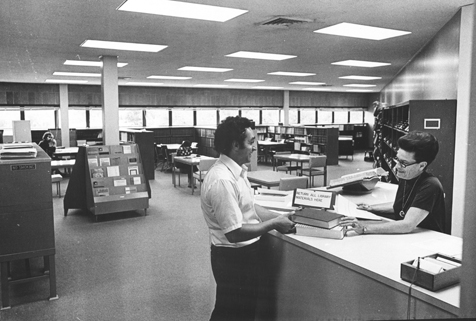
Faculty Research 1970 - 1979
Mouse embryo development in vitro: effects of inhibitors of RNA and protein synthesis on blastocyst and post-blastocyst embryos.
Document Type
Article
Publication Date
1975
Keywords
Blastocyst: de, cy, Culture-Media, Cycloheximide, Dactinomycin, Deoxyadenosines, DNA: bi, Embryo: de, cy, Female, In-Vitro, Mice, Mitosis, Pronase, Proteins: bi, RNA: bi, SUPPORT-U-S-GOVT-P-H-S, Thymidine: me, Tritium, Trophoblast: cy, Zona-Pellucida: de
First Page
133
Last Page
142
JAX Source
J Exp Zool 1975 May;192(2):133-42
Abstract
The effect of inhibitors of RNA synthesis (Cordycepin, Actinomycin D) and protein synthesis (Cycloheximide) on the development and growth of mouse blastocysts in vitro was explored. Blastocysts exposed in vitro for 24 hours to 50 mu-g/ml Cordycepin, 0.005 mu-g/ml Actinomycin D, or 0.1 mu-g/ml Cycloheximde grew and began to attach to the dish in the similar manner as did the controls. Cell number, 3-H-thymidine-labeling index and mitotic index in treated blastocysts were also similar to controls. Cell number, 3-H-thymidine-labeling index and mitotic index in treated blastocysts were also similar to controls. Control blastocysts grown in vitro for six days attached to the dish, trophoblastic layer was spread and inner cell mass continued to grow and formed an egg-cylinder like structure. Blastocysts grown in constant presence of 50 mu-g/ml of Cordycepin in themedium or those exposed to inhibitor only for the first 24 hours failed to develop inner cell mass derivatives in culture, although the growth of trophoblastic cells was as in controls. The same results were obtained if blastocysts were exposed to 0.005 mu-g/ml of Actinomycin D or to 0.1 mu-g/ml of Cycloheximide either continuously or for the first 24 hours. Higher concentrations of Actinomycin D (0.05 mu-g/ml) or Cycloheximde (1 mu-g/ml) were toxic for the blastocysts causing their degeneration within 24-48 hours. Our results suggested that appropriate concentrations of RNA or protein synthesis inhibitors could prevent the development of inner cell mass derivatives with essentially no effect on the development of primary trophoblast. This would indicate that the process of differentiation of inner cell mass cells is much more sensitive to metabolic inhibitors than the differentiation of giant trophoblastic cells.
Recommended Citation
Rowinski J,
Solter D,
Koprowski H.
Mouse embryo development in vitro: effects of inhibitors of RNA and protein synthesis on blastocyst and post-blastocyst embryos. J Exp Zool 1975 May;192(2):133-42

